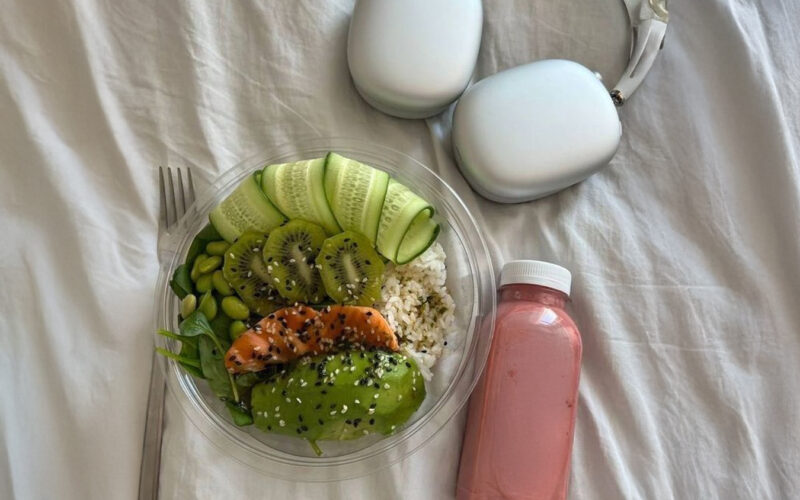Foods That Support Healthy Estrogen Levels in Women
Estrogen plays a crucial role in a woman’s health — from regulating menstrual cycles and supporting fertility to keeping bones, skin, and mood in balance. While your body produces estrogen naturally, certain foods can help support healthy estrogen levels. Incorporating these foods into your diet may help you maintain hormonal balance, reduce symptoms of estrogen imbalance, and support overall wellness.
What Is Estrogen and Why Does It Matter for Women?
Estrogen is often called the “queen hormone” for women because it takes care of so many important jobs in the body. Think of it like a manager who makes sure everything runs smoothly.
Here’s what estrogen does for women:
- Keeps your periods regular: Estrogen helps control your menstrual cycle, so your periods come on time.
- Supports fertility: It prepares your body for pregnancy and helps with ovulation.
- Protects your bones: Estrogen keeps bones strong and lowers the risk of them becoming weak or breaking.
- Keeps your heart healthy: It helps balance cholesterol and supports blood flow.
- Affects mood and sleep: Estrogen has an impact on your brain, which is why changes in estrogen can make you feel more emotional or affect how well you sleep.
- Improves skin and hair: Estrogen keeps skin soft and youthful and supports healthy hair.
When your estrogen levels are too low or too high, you might notice things like:
- Irregular or heavy periods
- Mood swings, anxiety, or low energy
- Trouble sleeping
- Weight changes
- Hot flashes (especially around menopause)
That’s why keeping estrogen balanced is so important. Just like a seesaw, your body feels its best when estrogen is not too high and not too low, but just right.
Curious to know what happens if your estrogen is high? Read our guide on High Estrogen in Women.
What Are Phytoestrogens?
Phytoestrogens are naturally occurring plant compounds that mimic estrogen in the body. Unlike synthetic hormones, phytoestrogens gently support your hormone balance rather than overwhelming it. They are especially helpful for:
- Women experiencing perimenopause or low estrogen symptoms
- Supporting regular menstrual cycles
- Supporting heart, bone, and brain health.
Common types of phytoestrogens include lignans, isoflavones, and coumestans, which are found in seeds, legumes, vegetables, and whole grains.
Top Foods That Support Healthy Estrogen Levels
Here’s a list of the most effective foods for naturally supporting estrogen in women, along with tips on how to include them in your diet.
Flaxseeds
Flaxseeds are rich in lignans, a type of phytoestrogen, and fiber, which helps your body metabolize estrogen effectively.
Tip: Sprinkle ground flaxseeds over oatmeal, smoothies, or yogurt.
Soy and Edamame
Soy contains isoflavones, plant compounds that mimic estrogen. Edamame is also a great source of protein.
Tip: Add tofu, tempeh, or edamame to stir-fries and salads.
Sesame Seeds
Sesame seeds are packed with phytoestrogens as well as calcium, magnesium, and zinc — all important for women’s bone health.
Tip: Sprinkle roasted sesame seeds over roasted vegetables or include tahini in dressings.
Chickpeas and Lentils
Legumes are excellent plant-based sources of protein and contain compounds that support hormone metabolism.
Tip: Use chickpeas in salads or make lentil soups for a nutrient boost.
Dried Fruits (Apricots, Dates, Prunes)
Dried fruits contain phytoestrogens and antioxidants, helping balance hormones while supporting digestion.
Tip: Snack on a small handful of dried fruits or add them to oatmeal or granola.
Garlic and Onions
These allium vegetables contain phytoestrogens and compounds that help support liver function, which is key for estrogen detoxification.
Tip: Incorporate garlic and onions into daily cooking for flavor and hormonal support.
Cruciferous Vegetables (Broccoli, Kale, Cabbage)
Cruciferous veggies contain compounds that help the liver break down excess estrogen.
Tip: Steam, stir-fry, or roast them regularly for optimal benefits.
Berries (Strawberries, Blueberries, Raspberries)
Berries are rich in antioxidants and have mild phytoestrogenic effects. They also support overall hormonal health by reducing inflammation.
Tip: Add fresh berries to smoothies, cereals, or as a snack.
Whole Grains (Oats, Barley, Brown Rice)
Whole grains are rich in lignans and fiber, which help regulate estrogen and blood sugar levels.
Tip: Replace refined grains with whole grains in daily meals.
Tofu and Tempeh
Fermented soy products like tempeh and tofu have higher bioavailability of phytoestrogens.
Tip: Use tempeh in stir-fries or tofu in soups and salads.
Are Phytoestrogens Dangerous?
There’s a common myth that consuming phytoestrogens, especially soy, may increase the risk of breast cancer. However, current research shows that moderate intake is safe for most women and may even be protective. Balance is key — aim for a variety of foods rather than excessive consumption of any single source.
Everyday Tips to Add These Foods to Your Diet
- Flaxseeds: Add ground seeds to oatmeal, yogurt, or smoothies.
- Soy/Tempeh: Include in stir-fries, soups, or salads.
- Dried fruits & nuts: Snack or mix into breakfast cereals.
- Cruciferous veggies: Steam, roast, or stir-fry regularly.
- Garlic & onions: Incorporate in daily cooking.
- Berries & whole grains: Mix into breakfast bowls, cereals, or snacks.
Even small, consistent additions of these foods can make a noticeable difference in supporting healthy estrogen levels over time.
The Bottom Line
Eating a variety of phytoestrogen-rich foods is a natural, effective way for women to support healthy estrogen levels. Combined with lifestyle habits like stress management, regular exercise, and sufficient sleep, these foods can help maintain hormonal balance, reduce symptoms of estrogen imbalance, and promote overall wellness.



